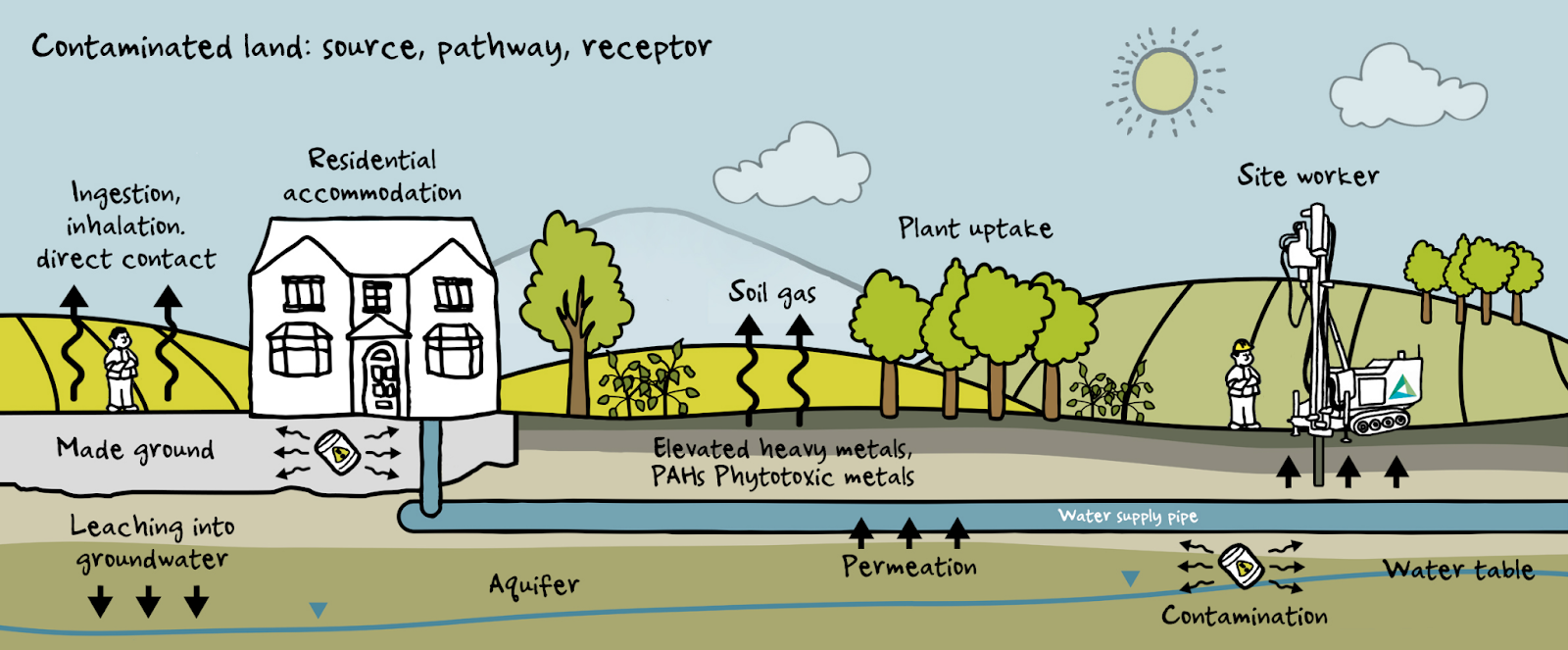Factsheet: Contaminated Land - assessment stages
Contaminated Land is assessed in incremental steps set out in industry guidance. The aim is to determine whether a site is suitable for its current or proposed use at the earliest point. This allows a decision in the most efficient way with the steps rising in cost as they progress. The process starts with Qualitative (professional judgement) assessments before moving into Quantitative sampling and ground investigations that reflect what is actually present.

Groundsures desktop reports (Homescreen, Homebuyers, Avista, Screening, Review, Agricultural, Siteguard & reseller specific reports) are not Phase 1s. They are to be used as the initial desktop study only.
Contaminated land assessment use the Source, Pathway, Receptor model:

Source or contaminant
A “contaminant” (source) is a substance which is in, on or under the land and which has the potential to cause significant harm to a relevant receptor, or to cause significant pollution of controlled waters. Examples include
- Gas/chemical or other types of works;
- Garages and petrol filling stations;
- Cotton mills;
- Military sites;
- Landfills;
Pathway
A “pathway” is a route by which a receptor is or might be affected by a contaminant. A pathway could be:
- Water course;
- Dust inhalation/ingestion;
- Dermal contact (contact with the skin;
- Gas migration.
Receptor
A “receptor” is something that could be adversely affected by a contaminant, for example a person, an organism, an ecosystem, property, or controlled waters:
- Site users;
- Residential gardens/occupants;
- Water courses & aquifers;
- Sensitive sites (AONB/SSSI).
During each of the first 3 phases (Groundsure Reports, Phase 1 and Phase 2) there is an opportunity to confirm the site is safe for its proposed used. But where this isn't possible you move onto the next phase.
If the ground investigation identifies unacceptable risks, then remediation or mitigation measures may be required to enable the development to proceed. Remediation involves the clean-up of a site to ensure that it is safe and suitable for use.
Both involve the breaking of the ‘pollutant linkage’ so that the pollutant cannot cause harm and the site can be considered as ‘suitable for use’. There are many ways to do this from the traditional removal of contamination, to on-site treatment, or the use of barrier membranes or capping.
Once remediation has taken place the site needs to go through a verification process which essentially validates that success of the remediation in breaking the pollutant linkage and making the site fit for purpose. This stage is vital.
Next article: what is a Phase 1?
Where can Groundsure help?

Contact us for further information:
Geology team: geology@groundsure.com
Projects team: projects@groundsure.com